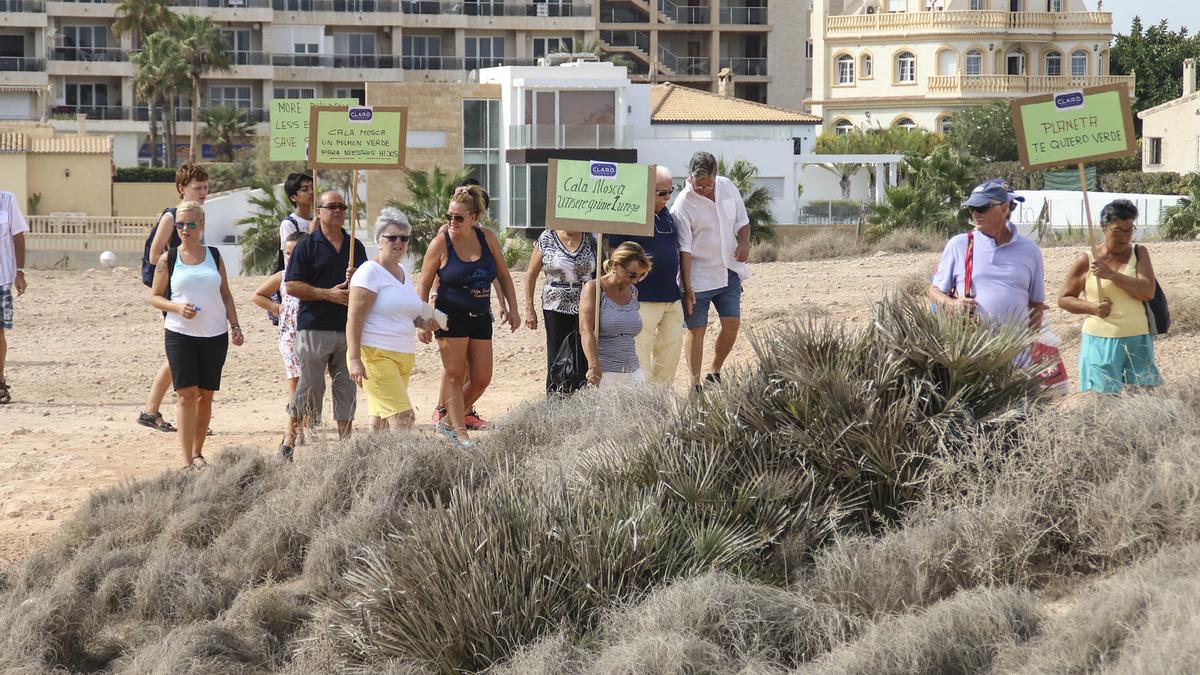The environment of Cala Mosca is located in the municipality of Orihuela, in the south of the province of Alicante, Spain. It is a virgin area, approximately one kilometer long, in which two endemic species survive, the Tudorella Mauretanica (snail) and the Jarilla Cabeza de gato (plant), among other inhabitants, also in a state of special protection, the Betic lizard or the kestrel, which nests on the cliffs.
This environment houses several accessible spaces for swimming in rocks and two virgin naturist beaches, next to another, frequented by walkers and swimmers accustomed to taking their dogs. However, the name of Cala Mosca remains for another small urbanized and textile cove on the border with the Playa Flamenca urbanization.
This is the last unbuilt kilometer of the saturated coast of Orihuela. A fact that causes foreseeable consequences in terms of the loss of its environmental and natural wealth, to which must be added the lack of services offered by the City Council on its coast, due to lack of security, traffic jams in the main streets and deficiencies in the garbage. . collection and purification of water.

The following information can be expanded at: https://www.elperiodicoextremadura.com/medio-ambiente/2021/12/30/requiem-cala-mosca-urbanismo-61146472.html
The area of Cala Mosca or Playa Flamenca is the only virgin kilometer of coastline left in the municipality of Orihuela, on the Vega Baja coast of Alicante. It is also perhaps one of the few on the entire first line of the sea in the province, one of the hardest hit by the urban “boom” that began in the 1980s and that not even the successive economic crises have been able to stop. También es quizá uno de los pocos de toda la primera línea del mar en la provincia, una de las más castigadas por el «boom» urbanístico iniciado en los años 80 y que ni las sucesivas crisis económicas han podido frenar.
Four years ago, the Generalitat Valenciana carried out the Territorial Action Plan for Coastal Protection (Pativel). It was an ambitious document that saved a good part of that first coastline from the brick, but the rush and lack of consensus have left the plan immersed in a legal battle, whose first sentences have punished the goodwill of the Consell de Ximo Puig. That strip of virgin coast, therefore, continues to be threatened.
On September 2, 2021, the Orihuela City Council approved the construction of more than 2,200 homes, which has caused a real social battle and protests from environmental groups. In Cala Mosca there are protected species, some endemic, such as the endemic snail and the Jarilla Cabeza de Gato flower. Kestrels nest and the Betic lizard resides. Several of the coves are also for consolidated naturist use.

The Orihuela coast has already far exceeded the growth maximums established in European, state and regional urban planning legislation. This is reflected in the Vega Baja Territorial Action Plan (PAT), higher in rank than the general urban plans of the 27 town councils in the region, which the Generalitat has drawn up with the aim of achieving rational land use.

